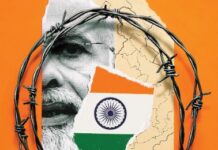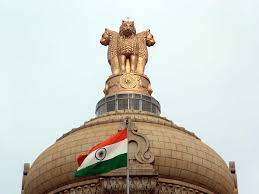India’s prime minister Narendra Modi granted a year-long extension in service to retiring heads of India’s Intelligence bureau (Arvind Kumar) and the Research and Analysis Wing (Samant Kumar Goel). Both officers are specialists in the art of disinformation and insurgency. They masterminded the so-called Balakot strikes inside Pakistan. Besides, they mounted a world-wide Pakistan-bashing campaign that resulted in Pakistan’s isolation in the comity of nations.
Pakistan’s FATF woes could veritably be attributed to the machinations of the said two officers. They are protégés of India’s national security czar Ajit Doval. Doval himself boasts of having carried out covert activities in Pakistan for about 11 years. He did not care a fig for violating the diplomatic norms while posted in Pakistan.
The common belief is that the IB and the RAW have separate domains. But, in actual fact, both organizations coordinate their activities. Like the RAW, the IB also has its offices abroad. In his book, RAW: A History of India’s Covert Operations, Yatish Yadav makes startling disclosures about activities of India’s intelligence agencies.
In a chapter titled “Hunting the RAW traitor”, he reveals that a RAW officer Rabinder Singh sold national secrets to the CIA for money. Singh was outwardly a religious person who had a penchant for quoting from the Hindu religious book Bhagwad Gita. Although given asylum in the USA, he was soon forsaken by the CIA and met with an unexplained road accident there. The accident was masterminded by the RAW.
Initially, the IB was responsible for India’s internal and external intelligence.In 1968, it was bifurcated and left with internal intelligence only, while its external branch was handed over to the newly-created Research and Analysis Wing (RAW). RAW provides intelligence to policymakers and the Army and it keeps a close eye on the activities of the neighbouring countries (China, Pakistan, Sri Lanka, Myanmar, amon others) of the nation.
The main functions of the IB include counterintelligence, counterterrorism, VIP Security, anti-secession activities and intelligence collection in border areas. RAW on the other hand collects secret information about the activities of neighbouring countries. IB functions under the governance of the Ministry of Home Affairs, while RAW has been placed directly under the Indian Prime Minister’s Office. IB gets its employees from the Indian Police Service, law enforcement agencies and the military, while RAW has its own service cadre known as the Research and Analysis Service (RAS).
In order to sabotage the China Pakistan Economic Corridor (CPEC), the RAW has set up a cell ‘under the supervision of the Indian Prime Minister’. Yet another book (Terror in Islamabad) has been published by an officer Amar Bhushan who happened to have served as a diplomat at the Indian High Commission Islamabad. Before being posted to Islamabad, Bhushan had served as an officer of India’s premier intelligence agency Research and Analysis Wing, Border Security Force Intelligence, and State Special Branch for a quarter of a century.
RAW stoked the insurgency in East Pakistan that led to dismemberment of Pakistan. The Indian army and other agencies acted in tandem.
Indian diplomats developed deep ingress in Islamabad. On 29 May 1988, a senior official of the Pakistan Intelligence Bureau was abducted in Islamabad by the Inter-Services Intelligence Directorate (ISI). The abducted, a RAW agent, revealed the location of a secret telephone exchange that was monitoring calls made by Zia-ul-Haq.
Kulbushan Jhadav’s story speaks volumes on how India utilises even its serving officers to carry out sabotage and subversion in Pakistan.
RAW is a master of ‘disinformation’ (Russian dezinformatsiya). Dsinformation is a concept that finds mention in Sun Tzu’s Ping Fa (Principles of War). Even before Sun Tzu, Kautilya in Arthashastra supported disinformation as a civil and military warfare tool within his concept of koota yuddha (unprincipled warfare as distinguished from dharma yuddha, righteous warfare).
EU Lab belatedly discovered an India-sponsored worldwide network that spread disinformation against Pakistan. Even prestigious Indian newspapers sometimes publish reports or articles that smack of being pieces of state-sponsored disinformation. Harvard’s criteria for detecting fake news could be applied to disinformation bloomers. Harvard suggests `everyone should vet a publisher’s credibility first and then check all the sources and citations’. James Carson offers tips in his article `Fake news: What exactly is it – and how can you spot it‘? (Telegraph, 31 January, 2019).Disinformation camouflaged in op-eds is hard to detect as they do not usually quote their sources of information.
RAW officers speak many languages such as Chinese, Russian, Arabic, Sinhalese, German, Polish and Urdu. By the time of Morarji Desai, RAW had a staff of “more than 5000 on its payroll”. RAW “recruited trained and deployed informers and covert action teams in the USA, Iran and several European countries as well as in India’s immediate neighbourhood. It also employed analysts, polygraph examiners, cartographers, linguists, economists and political analysts to defend the country from internal foes and external enemies.”
In Bangladesh, RAW combated the influence of the CIA and Pakistan. The assassination of Sheikh Mujibur Rahman was a big blow and a much-chastened RAW regrouped to regain its lost influence in Bangladesh. By November 1988, RAW’s station head, code-named Krishna Patwardhan, had set up the necessary network in Bangladesh, to target elements that were hostile to India.
RAW saw spectacular action in other theatres as well. On March 20, 1988, RAW operative Anupam Malik began to carry out Mission Fiji’, “aimed to disrupt and dismantle Fiji’s military regime” that threatened to upset the ethnic balance in Fiji. Attempts were being made by this regime to deny political rights to ethnic Indians, most of whom had been immigrants to the country during the British Raj. Deporting all ethnic Indians to India’ was a distinct possibility. By the 1990s Sitiveni Rabuka, the strongman, was honey-trapped and compromised by RAW agents in Fiji and had to abdicate political power.
Similarly, RAW’s involvement in Afghanistan, began with the USSR’s invasion of the country. The agency’s operatives carried out missions right through the chequered regimes of Taraki, Amin and Karmal, encountering opposition from Pakistan’s Zia ul-Haq and the Taliban at different times.
In Sri Lanka, RAW propped up the Liberation Tigers of Tamil Eelam (LTTE) and had to follow the contradictory path of support and opposition following the dictates of the political masters in Delhi.
In the chapter titled “Shadowy War in Washington”, we see the RAW operative code-named ‘Blue Sky’ tracked down the Khalistani leader Jagjit Singh Chouhan and successfully penetrated the World Sikh Organisation, the International Sikh Federation and the Babbar Khalsa International.
In Nepal, the RAW bankrolled the opposition to topple prime minister Oli’s government.
RAW’s cover officers, including RK Yadav and B. Raman, make no bones about India’s involvement in Bangladesh’s insurgency. They admitted that India’s prime minister Indira Gandhi, Parliament, RAW and armed forces acted in tandem to dismember Pakistan. Raman reminds us that the Indian Parliament passed a resolution on 31 March 1971, to support the insurgency.
In order to sabotage the China Pakistan Economic Corridor (CPEC), the RAW has set up a cell ‘under the supervision of the Indian Prime Minister’.
Yet another book (Terror in Islamabad) has been published by an officer Amar Bhushan who happened to have served as a diplomat at the Indian High Commission Islamabad. Before being posted to Islamabad, Bhushan had served as an officer of India’s premier intelligence agency Research and Analysis Wing, Border Security Force Intelligence, and State Special Branch for a quarter of a century. His book mentions another RAW officer, Amit Munshi (real name Veer Singh) posted as Cultural Attaché.
Bhushan’s book reveals that Singh’s assignment was to “identify potential Pakistanis for subversion”. The familiar elements of intelligence craft are espionage, sabotage and subversion. India added one more element “insurgency” to the intelligence craft. The RAW officer B. Raman, in his book The Kaoboys of R&AW: Down Memory Lane makes no bones about India’s involvement up to the level of prime minister in Bangladesh’s insurgency.





















